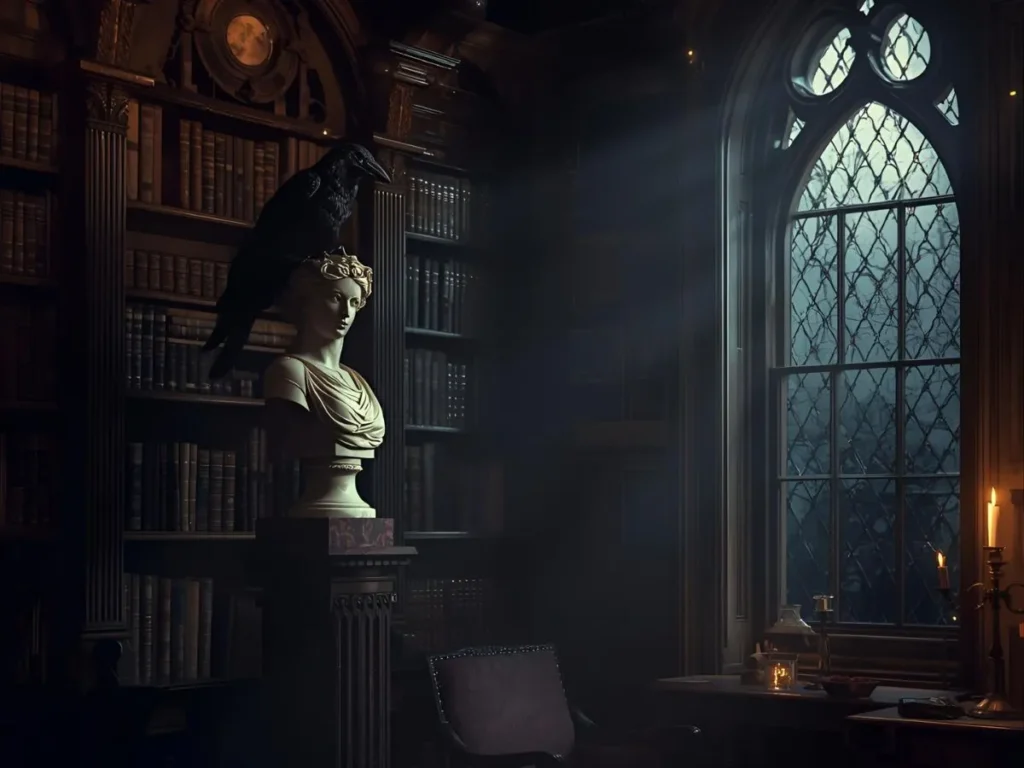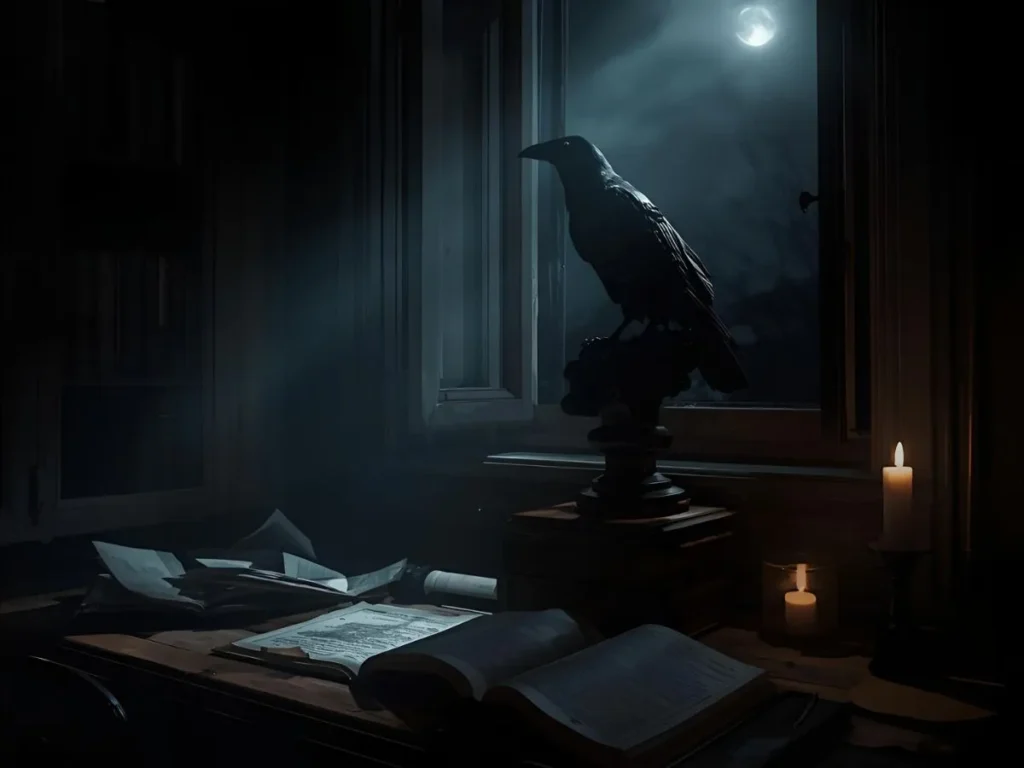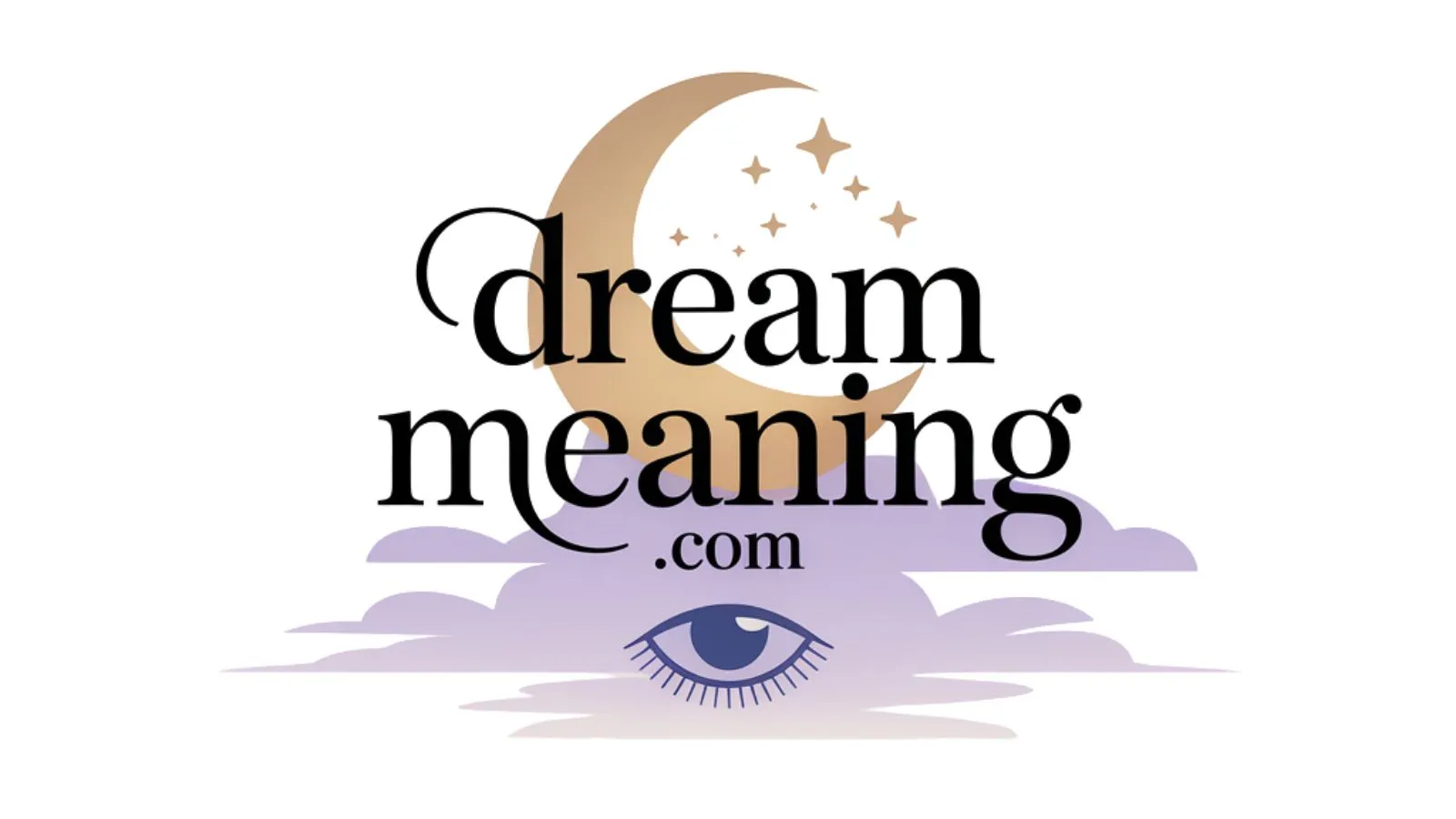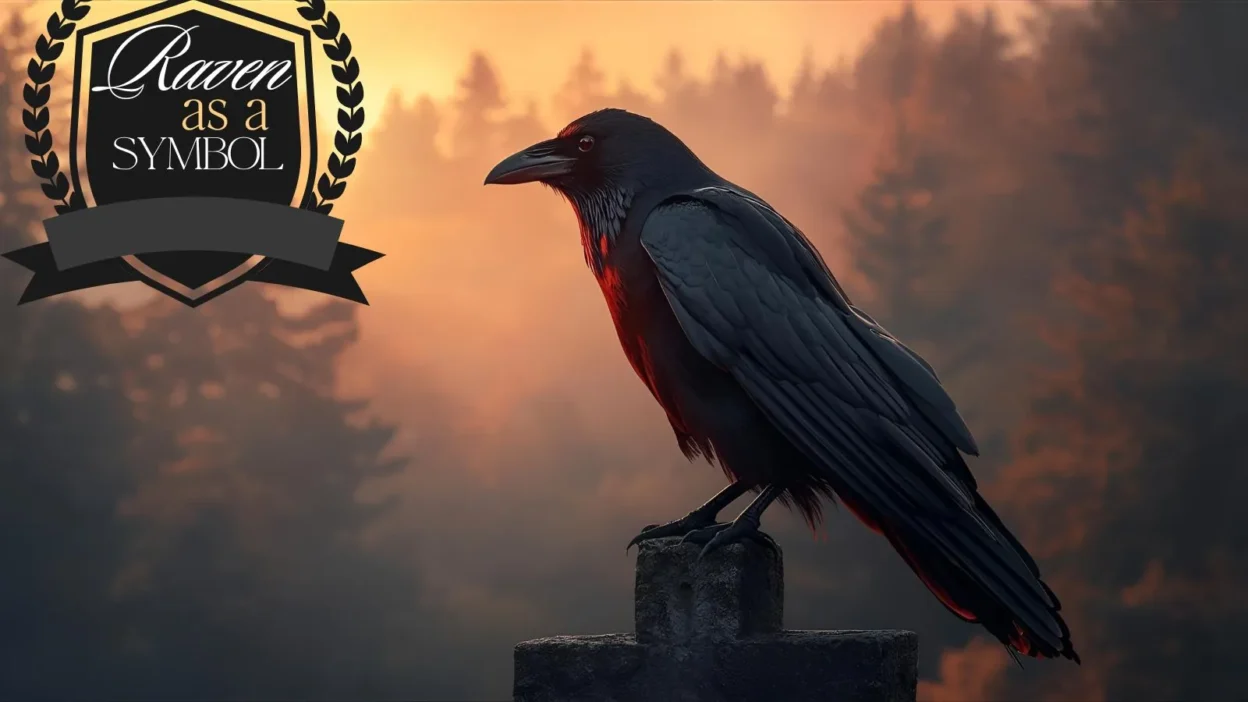Have you ever wondered why the raven — that dark, mysterious bird — holds so much symbolism across cultures and stories?
If you’re someone who loves exploring spirituality, hidden meanings, and the magic behind signs, then this topic is just for you.
I know you’re the kind of person who looks beyond the surface — who believes that every creature, even a bird, carries a deeper message.
So today, let’s uncover the mystery together and find out what the raven truly symbolizes — darkness or wisdom, death or transformation?
What Does the Raven Symbolize in Poe’s Poem?
- The raven is a grief echo, repeating loss like a haunted echo.
- A black sentinel watching over despair.
- The raven as a grim messenger—never hopeful, only final.
- A shackle of memory that never leaves.
- The raven as a reminder carved in darkness.
- A voice of the abyss—“nevermore” as abyssal decree.
- A soul’s shadow perched on the mind.
- The raven as a monolithic sorrow, unmoved and unyielding.
- A prophecy of stasis—no change, no escape.
- A mourning mirror, reflecting the narrator’s pain.
- The raven as a gatekeeper of permanence.
- An oracle of no return.
- A black seal pressed on hope.
- The raven as the anchor of despair.
- A monochrome witness to eternal loss.
Why Is “Nevermore” Significant Symbolically?
- “Nevermore” is a verdict in one word.
- A lock on the door of hope.
- A refrain of finality.
- The heartbeat of despair in a single syllable.
- A chain link in grief’s cage.
- The raven’s eternal echo in the soul.
- A curse masked as prophecy.
- A permanent punctuation on longing.
- “Nevermore” as the endless echo of sorrow.
- The death knell in a whisper.
- A shadow-word cast across dreams.
- The final ink on what cannot heal.
- “Nevermore” as a closed door in speech.
- A mirror that replies, “no more.”
- The raven’s signature on pain.
What Is the Symbolism of the Bust of Pallas in The Raven?

- The bust of Pallas is wisdom’s throne under siege.
- It’s reason’s pedestal, now overshadowed.
- A victim of grief, trampled by emotion.
- The bust as thought turned to stone.
- Rationality interrupted by sorrow.
- A statue of sense that silence now mocks.
- Pallas as the watchful guardian of logic, now silenced.
- The bust as mind’s bastion invaded.
- A symbolic schema of intellect under siege.
- The bust as innocent logic fallen to grief.
- Reason’s monument dethroned by despair.
- A silent witness to madness.
- Pallas as light in mind now eclipsed.
- The bust as frail fortress of sense.
- Wisdom’s visage, now haunted by sorrow.
How Does Night / Darkness Symbolize Grief in the Poem?
- Night is grief’s blanket of concealment.
- Darkness as a mirror to inner night.
- The night as a canvas for sorrow’s silhouette.
- Darkness as absence made felt.
- Night as the cloak of mourning.
- Darkness as time turned inward.
- Night as silent accomplice to memory.
- The night as ever-waiting despair.
- Darkness as the soil in which grief roots.
- Night as space between lost and longing.
- Darkness as the veil between life and death.
- The night as eternal dusk in the heart.
- Dark hours as echo chambers of grief.
- Night as the stage for sorrow’s drama.
- Darkness as grief’s constant companion.
What Does the Chamber / Room Symbolize in The Raven?
- The chamber is the mind’s fortress.
- A sanctuary invaded by grief.
- The room as an inner prison.
- A memory vault clogged with sorrow.
- The chamber as safe walls breached by loss.
- A sacred space profaned by torment.
- The room as mind’s mirror, cracked.
- A confined cosmos of the self.
- The chamber as heart’s cell.
- The room as grief’s stage.
- The chamber as inner sanctum desecrated.
- A mental mausoleum.
- The room as echo chamber of memory.
- A threshold-less cell, no escape.
- The chamber as echo-chamber of sorrow.
What Role Does Lenore Symbolize in the Poem?
- Lenore is ideal love now ghost.
- A memory muse that haunts.
- Lenore as light permanently out.
- The symbol of what’s lost, forever yearned.
- Lenore as memory made sacred.
- A phantom hope in the shadows.
- Lenore as silence personified.
- The symbol of beauty frozen in time.
- Lenore as the absent presence.
- The phantom of what once warmed the heart.
- Lenore as the unquenchable memory.
- The symbol of unfinished ache.
- Lenore as a name carved in sorrow.
- The absence that haunts every word.
- Lenore as eternal longing incarnate.
How Is the Shadow / Light Symbolic in The Raven?

- Light’s glow highlights the raven’s ominous shadow.
- The shadow as grief’s silhouette on the soul.
- Light as fragile hope, barely piercing darkness.
- Shadow as memory’s stain.
- The interplay of light and shadow as mind’s tug of war.
- Shadow as sorrow’s cloak cast across self.
- Light as memory’s fading flicker.
- Shadow as eternal eclipse.
- Light as the hope that flickers and dies.
- Shadow as grief’s imprint on existence.
- Light and shadow as duet of despair and denial.
- Shadow as the raven’s silent mark.
- Light as a dying ember of hope.
- Shadow as the weight of remembered darkness.
- Light as memory’s faint pulse, shadow as its regret.
Why Do People Still Study Symbolism in The Raven Today?
- It’s a timeless mirror for universal grief.
- Because each reader finds their own raven of loss.
- It’s a multilayered map for emotional terrain.
- Because symbols speak beyond eras.
- It’s a toolbox for introspection.
- Because it shows how words wear meaning.
- It’s a bridge between poet and psyche.
- Because the symbols haunt your subconscious.
- It’s the ever-renewing hunt for meaning.
- Because we crave images to carry sorrow.
- It’s where literature and life collide in metaphor.
- Because the symbolism is never exhausted.
- It invites active reading and reinterpretation.
- Because the symbols linger long after the reading.
- It’s a playground for emotional discovery.
😊 Conclusion
And there you have it: eight deep questions people ask about The Raven, each answered with 15 crisp, memorable symbolic lines.
Use them as bookmarks, quotes, journal prompts, or creative launching pads of your own. After all, Poe intended that The Raven keep echoing in your mind—why not with vivid symbols that stick?
May your midnight readings be rich, your interpretations bold, and may “Nevermore” echo with significance for you.

Elizabeth Gilbert is a celebrated American author known for exploring self-discovery, spirituality, and life’s deeper meanings. Her writings inspire readers to uncover the hidden messages in dreams, symbols, and personal journeys—perfectly aligning with the mission of DreamMaening.com.




